Insurance, yes I’m back again to have another go at the insurance conundrum. Insurance has become by default a massive part of my equine life. I would love to say I’m an expert at this stage–but almost a year later and I’m still trying to wrap my head around it.
Some of you may remember the first ever article I wrote for the Grassroots Gazette titled “Insurance, the ruination of all?” It is a touchy subject, and I can understand completely if someone has deliberately been harmed or believes they should be compensated, then of course it should be looked into. But I am merely writing this from the opinion of someone who is trying to make sense of the many policies/rules/regulations etc. involved and also highlighting the fact that no matter how many waivers are signed or policies written the underlying issue has not gone away.
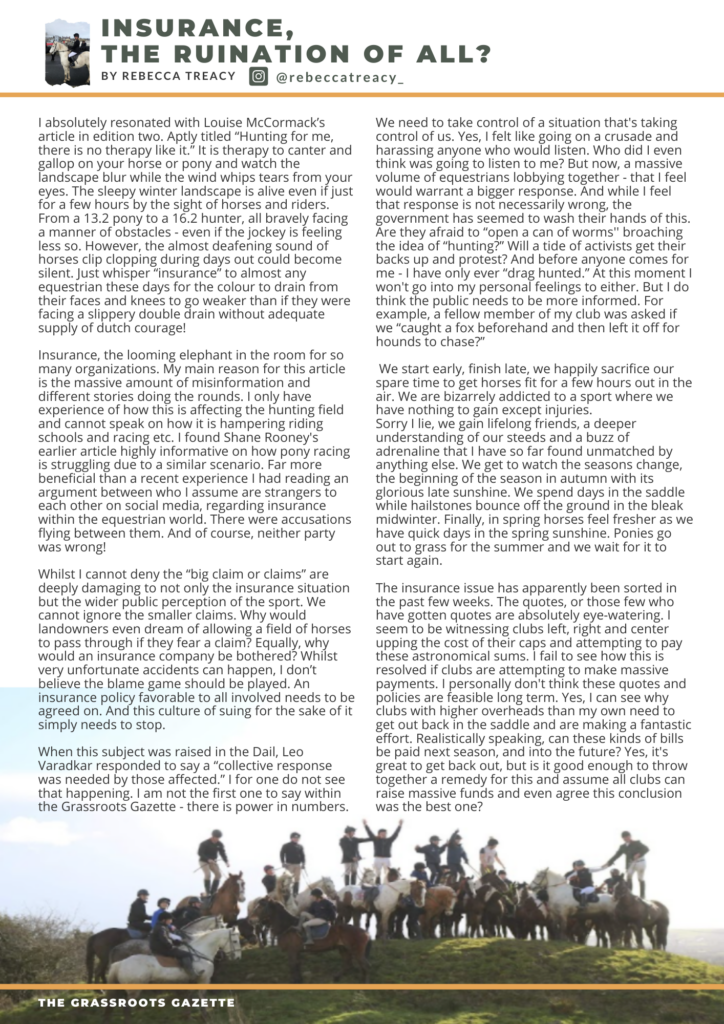
“It’s as clear as mud” us equestrians are well versed in mud. But the jumbled-up paragraphs outlining indemnity, liability and underwriters are enough to make my head spin. I was very excited during December when another equine magazine had a few articles on how the insurance “issue” was being discussed at length. Numerous meetings were had and a “deal was said to be on the table.” Naïve me thought all the prayers were answered. Then there was radio silence. Nothing.
Was the deal still being discussed?–word on the street was they had reached a stumbling block around some legislation on waivers and confirming indemnity to landowners. But like all things associated with this insurance issue from the very start, we have seemed to rely on second-hand information.
Then finally, at the end of January, word spread that the insurance was sorted, and a deal had been secured. This was secured by the IMHA and IMFHA and was supported by the Hunting Association of Ireland and IHRB.
Whilst I am going on a little rant, I really do appreciate the time and effort the above associations have put in, and I understand this was not an easy journey for anyone involved. This insurance scheme is known as The National Hunt, Steeplechase, Point to Point and Field Sport Insurance Program. It was based on the model already in place by the National Association of Regional Game Councils. It confirms landowners who allow clubs to ride on their land or hold events such as point to points will be indemnified. Most definitely a positive note.
In following the model of the above NARGC, a group fund is to be set up and grown over the coming years in the hope of bringing a long-term resolution. In addition, riders must have their own public liability insurance (hunt club needs to check this) and will need to sign an exclusion of liability waiver- confirming they participate at their own risk and waiving the right to sue the hunt club. Right, all looking as you would expect so far. Following this rider’s need to have the public liability as above and insurance cover. This is where I get confused. Numerous clubs were getting their specific waivers signed in the presence of a solicitor.
Now my understanding is if a waiver is signed “normally” it reduces the claim by up to 20%. However, if signed in the presence of a solicitor, it can reduce the claim by 50% – 70%. But regardless of who is present in signing this, IF a claim goes to court, the waiver is not accepted as full proof. So now hunt club secretaries have extra tasks and responsibilities in checking all rider’s insurance policies and also ensuring the waiver was signed with a solicitor present. That is not only a lot of additional paperwork but time and big responsibility on someone who is most often an unpaid volunteer within club committees.
Those who fall behind get left behind.
This seems to be where any information or articles on this stop. The next most relevant thing I could find were lovely images of clubs back out and reports on the day’s hunting. Maybe a line stating, “this is their first day back after being side-lined for the past few months due to insurance.” And that’s it. I’m not trying to be smart or act as if I have a massive chip on my shoulder. But from where I’m sitting, it just seems clubs from the more “affluent” parts of the country have fared out much better. If they always have these kinds of funds or are able to raise them to get back out, fair play. I’ll be the first to shake their hand for it. But it is very much a case of those who are falling behind are getting left behind.
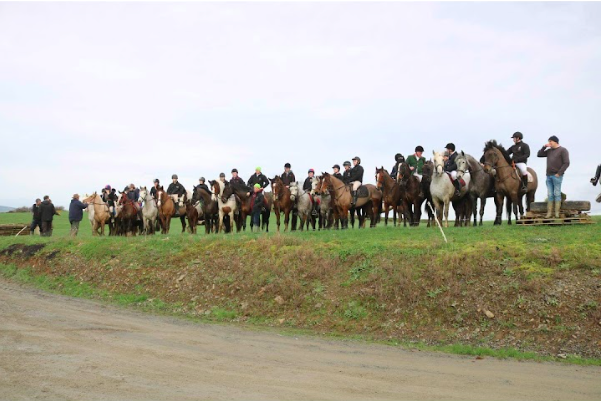
As I write this, I am thinking of my own club. A club catering to the working man and woman – I have written about us before. We have an EGM planned for just over a week’s time. The only topic of discussion is the insurance quote we received.
The mere mention of the word insurance seems to be a death toll for many small clubs. It’s heartbreaking to think we could be next.
**
IMFHA: Irish Masters of Foxhound Association
IMHA: Irish Masters of Harriers Association
IHRB: Irish Horseracing Regulatory Board
NARGC: National Association of Regional Game Councils
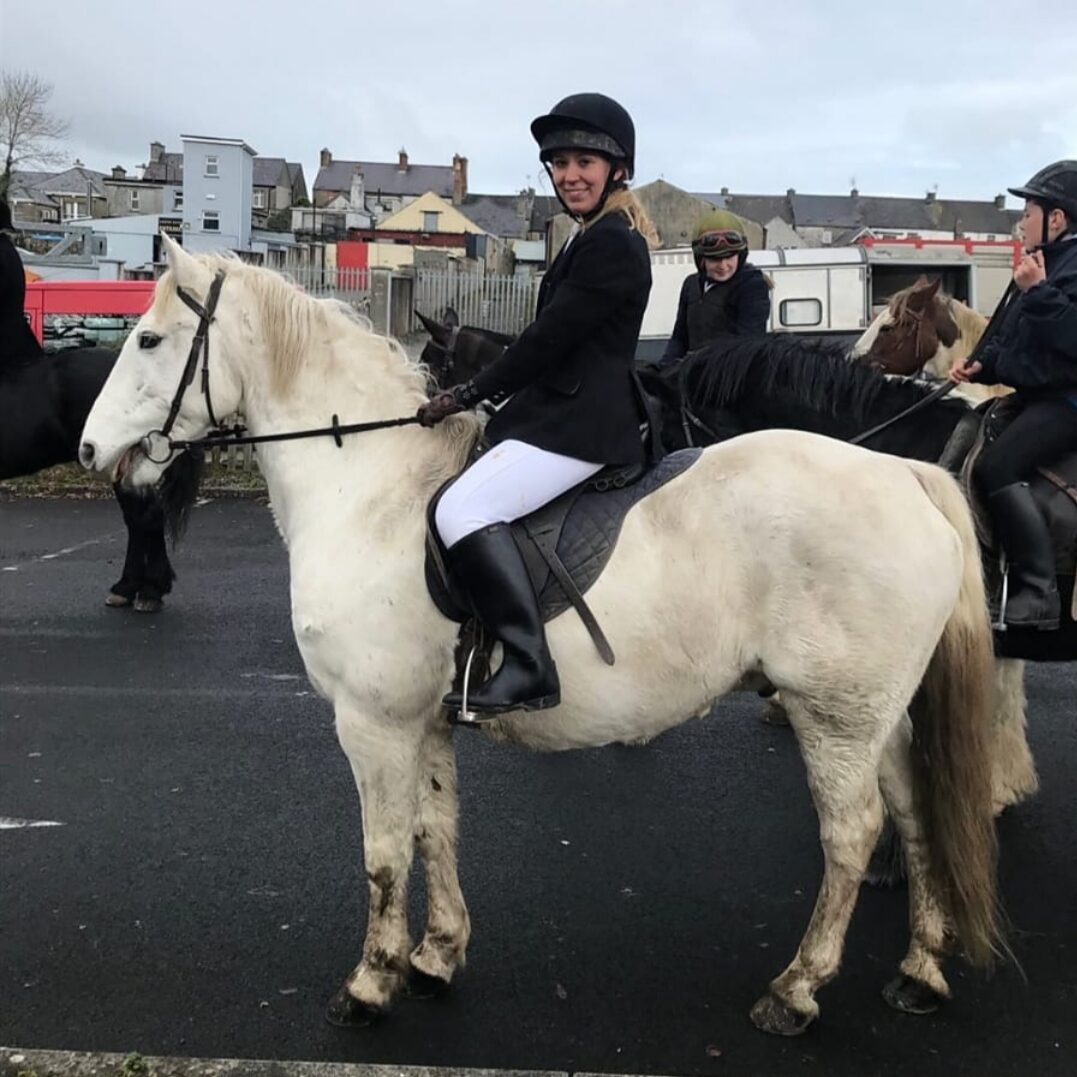

Share
Your subscription is 100% Free for our first year, No credit card details required.

The Judging Concerns That Keep Coming Back — And Why They Can’t Be Ignored Anymore We didn’t make it to
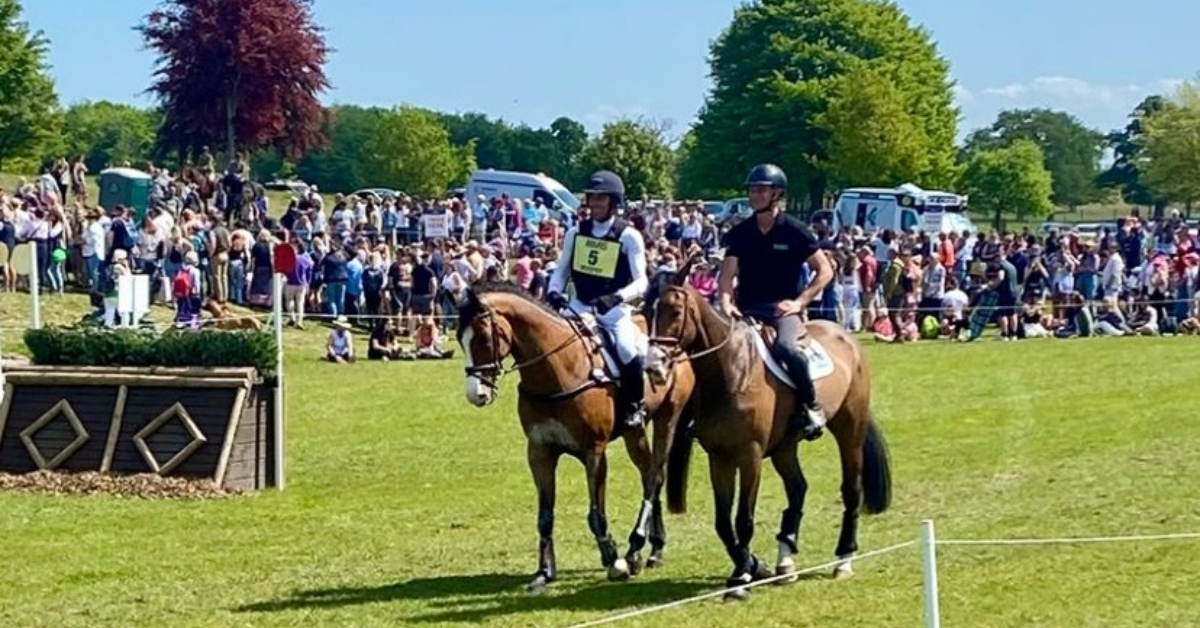
There are few sporting events that live up to the hype. Wimbledon? Too many strawberries. Cheltenham? Too many suits. But
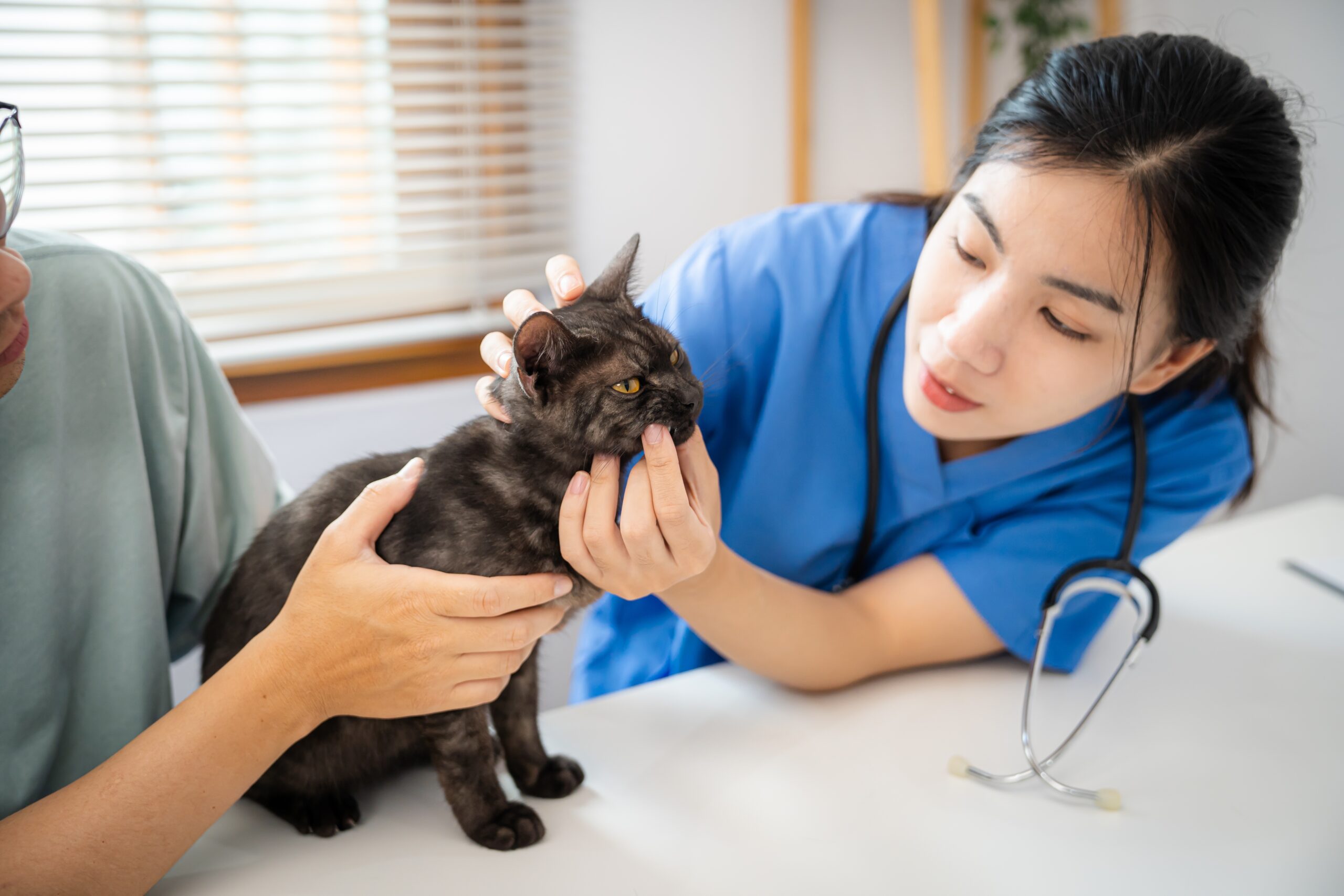
British Veterinary Association publishes full response to Competition and Markets Authority’s proposed remedies for veterinary market for household pets. The